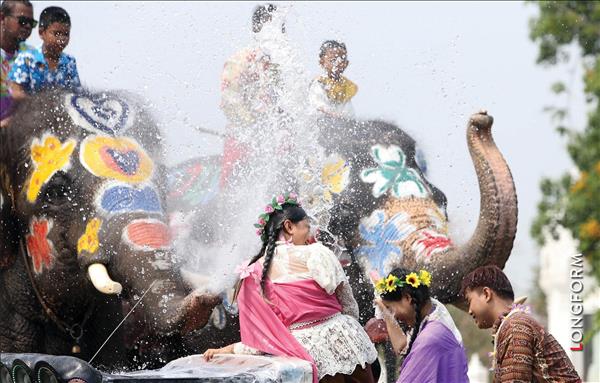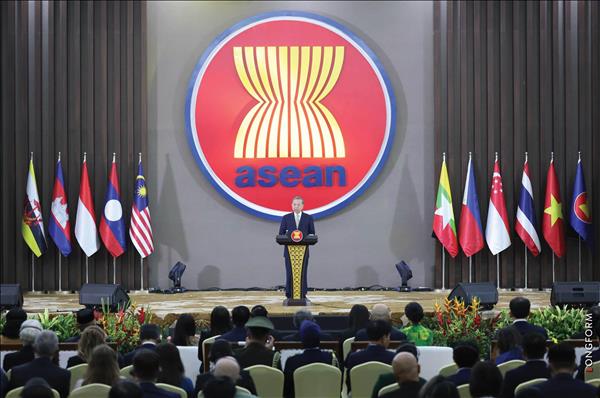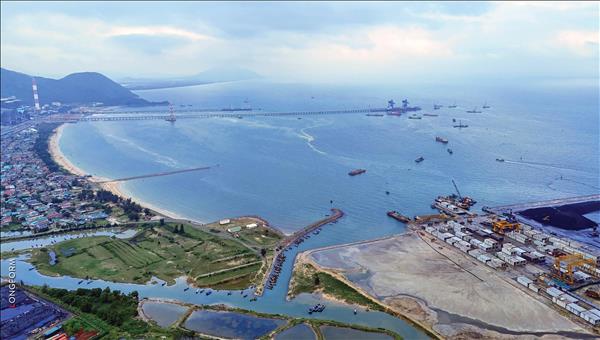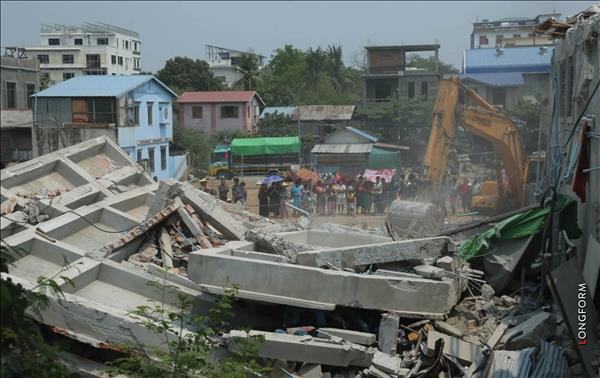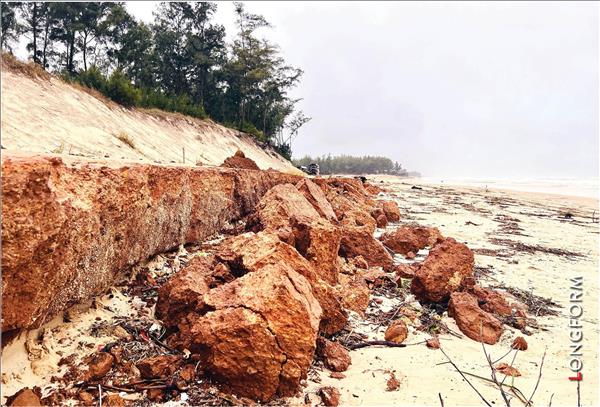In the context, Vietnam has made the efforts to strictly follow current COVID-19 prevention and control measures and stop the community transmission of COVID-19 in the nation.
The highest priority at this time is to fight COVID-19 and deal with its consequences in order to ensure security and safety as well as the public’s health, and complete the set dual goals, Prime Minister Pham Minh Chinh said on a woking session between the National Steering Committee for COVID-19 Prevention and Control and representatives from ministries and agencies.
Prime Minister Pham Minh Chinh has called on the whole political system, army and people to join hands in combating the COVID-19 pandemic. He made the request while chairing a meeting between the cabinet and the National Steering Committee on COVID-19 Prevention and Control on May 10 to discuss drastic measures against the pandemic.
The PM asked the Ministry of Health to identify pandemic risk levels, issue stark warning, as well as pen measures and requirements of medical supplies for each level.
The ministry must clarify the number of COVID-19 vaccine doses, and the exact dates they will come to the country, he said, adding the Ministry of Foreign Affairs should join hands in the search for vaccine resources.
He also asked the ministry to tighten discipline within the sector, and strictly follows current regulations, with priority given to the 5K message.
As for the police, military and border guard forces, Chinh ordered them to enhance control of the border areas, as well as detect and mete out punishment to anyone with illegal immigration and residence.
Meanwhile, localities should stay prudent, and promote supervision and control of the COVID-19 situation, he added.
The ministries of Health and Finance were told to work together to remove bottlenecks for the pandemic prevention work, and ensure transparence and instruction of prices of medical equipment and supplies.
PM Chinh also urged the implementation of information technology to close the gap in COVID-19 control, while laying stress on the necessity to build more COVID-19 treatment hospitals.
Besides, he asked the health ministry and competent authorities to step up communications work to raise public awareness of the pandemic situation, prevention measures, and future response.
The COVID-19 pandemic in Laos has been gradually controlled with new infection cases falling, especially in major cities.
The Lao Health Ministry on May 11 announced that there were 35 new infections in the past 24 hours, including nine in Vientiane, five imported in Champasak and 20 in Tonpheung district of Bokeo province bordering China.
So far, Laos has recorded 1,362 infections, 297 of them have recovered and one death.
Meanwhile, the Cambodian Health Ministry reported that the number of new cases decreased on the third consecutive day, reaching 480 on May 11, raising the total to 20,223. Of which, 8,170 have been given all-clear from the virus.
Earlier on May 10, Australia signed an agreement with the United Nations Development Programme (UNDP) to provide an additional aid of 3.15 million USD to help Cambodia mitigate the impacts of the pandemic.
Also on May 11, Cambodia received the third batch of Sinovac vaccine with 500,000 doses from China.
The nation has so far received more than 4 million doses of vaccines, including 1.7 million doses of Sinopharm aided by the Chinese Government, 2 million Sinovac doses bought from China and 324,000 AstraZenica through COVAX Facility.
To date, more than 1.8 million Cambodians have been vaccinated against COVID-19.
In the immediate future, the Thai government had set a target of buying 100 million doses to inoculate 50 million out of about 70 million Thais and thus create herd immunity.
Thai Prime Minister Prayut Chan-o-cha announced that his country will purchase up to 200 million doses of COVID-19 vaccine in preparation of unforeseeable emergencies as the pandemic continues to rage on in some countries.
The COVID-19 pandemic continues to ravage many Southeast Asian countries, with the exception of Brunei which on May 6 marked one year free from COVID-19 transmission in the community.
Brunei reported the first case on March 9, 2020, and has so far recorded 228 infection cases, 219 of them having recovered and three died.
The country launched a vaccination drive on April 3 this year and as of May 5, 17,776 people out of Brunei’s population of 450,000 had been vaccinated.
Meanwhile, Indonesia on May 6 began imposing a travelling ban across the country in an effort to contain SARS-CoV-2 during Eid al-Fitr celebrations, when millions normally travel to mark the end of the Islamic fasting month.
The country has to date logged 1.69 million infections and more than 46,300 deaths related to the disease, a record in Southeast Asia.
Malaysia has tightened measures to stop the spread of COVID-19, including extending the ban on inter-state travel to June 6.
Senior Minister and Minister of Defence Ismail Sabri Yaakob also said social activities, education and economic activities that could attract public gatherings are not allowed in the period.
From May 10, all Ramadan and Aidilfitri bazaars in movement control (MCO) areas will be closed.
The number of new COVID-19 cases in Malaysia has surged over the past two days at more than 4,000 each day, reaching a three-month high of 4,519 on May 8.
Meanwhile, the Manpower Ministry of Singapore said on May 7 that it will also reschedule entry into Singapore for work pass holders who had earlier obtained approval to come to the country.
Work pass holders from higher-risk places who were approved to enter Singapore before July 5 will no longer be allowed to do so, with the exception of those from the construction, marine shipyard and process sectors and migrant domestic workers.
The agency said it was making these changes during a period of heightened alert, in view of a resurgence of COVID-19 cases in several countries and the emergence of new virus variants.
The highest priority at this time is to fight COVID-19 and deal with its consequences in order to ensure security and safety as well as the public’s health, and complete the set dual goals, Prime Minister Pham Minh Chinh said on a woking session between the National Steering Committee for COVID-19 Prevention and Control and representatives from ministries and agencies.
Prime Minister Pham Minh Chinh has called on the whole political system, army and people to join hands in combating the COVID-19 pandemic. He made the request while chairing a meeting between the cabinet and the National Steering Committee on COVID-19 Prevention and Control on May 10 to discuss drastic measures against the pandemic.
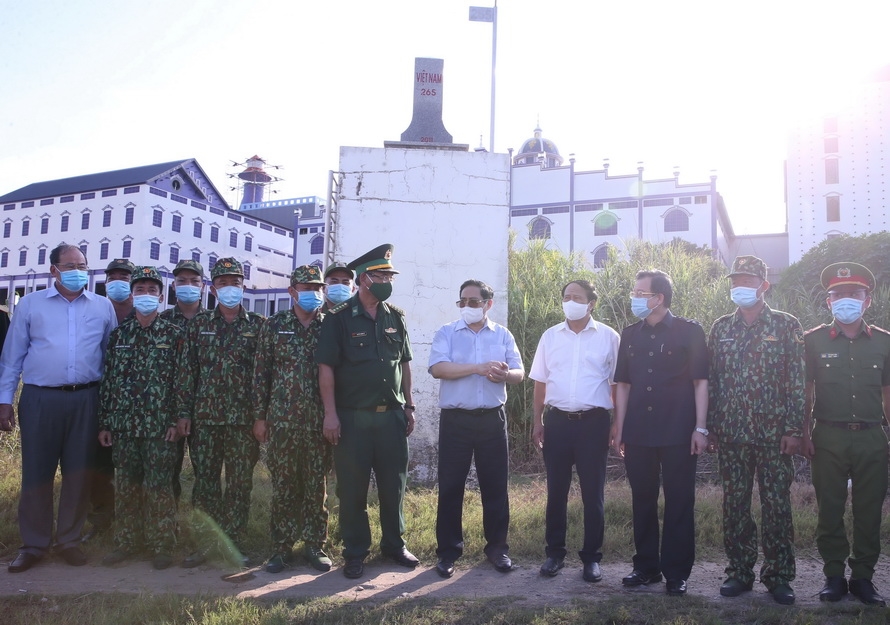 Prime Minister Pham Minh Chinh toured the Vinh Nguon border checkpoint in Chau Doc city of the southern border province of An Giang to inspect border control and management there. Photo: Van Diep/VNP 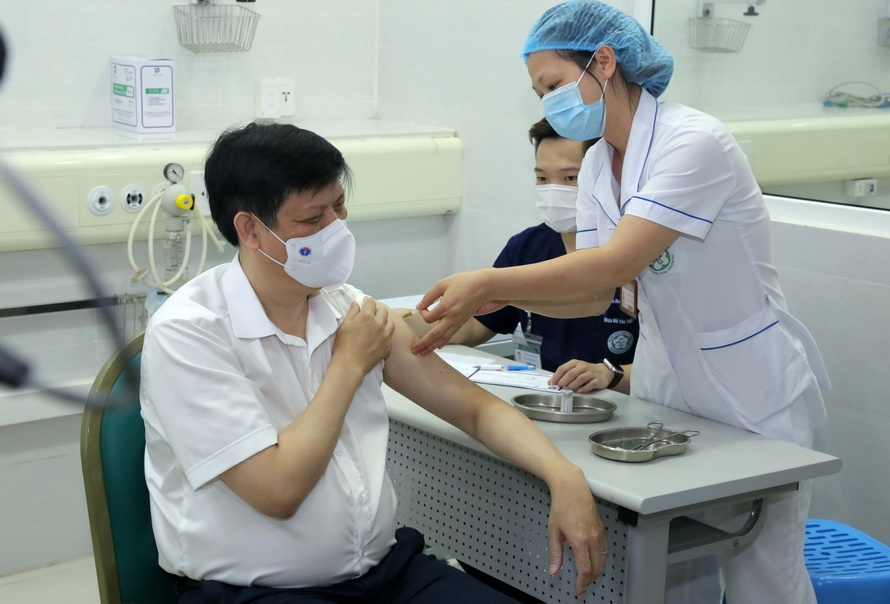 Minister of Health Nguyen Thanh Long, his deputies and leaders of units at the Ministry of Health received COVID-19 vaccine shots on May 6 morning at the Hanoi-based Bach Mai Hospital. Photo: Hoang Hieu/VNA 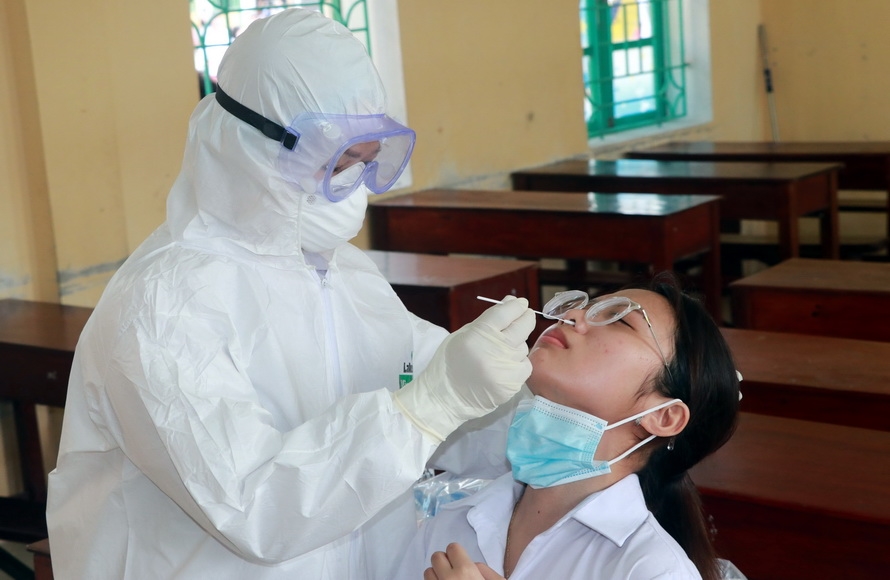 Taking sample for COVID-19 testing at Le Quy Don high school, Truc Ninh district, Nam Dinh province. Photo: Van Dat/VNA 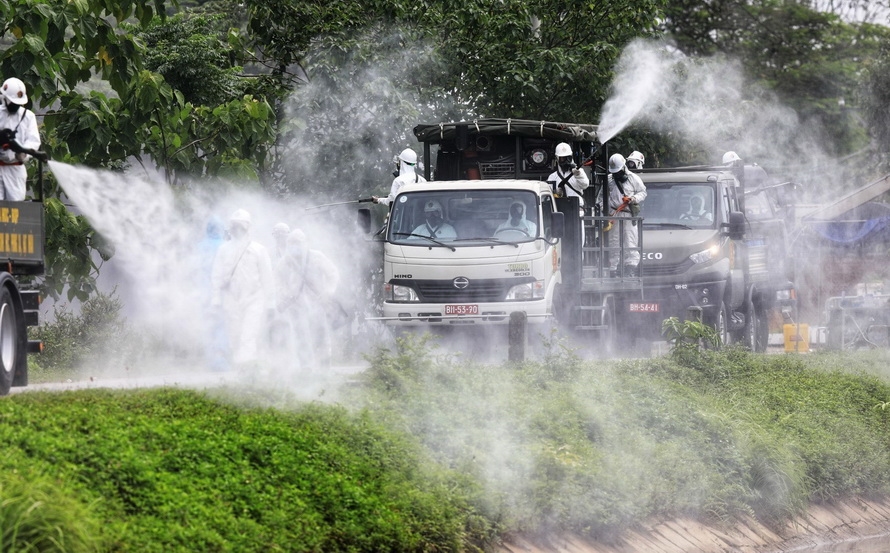 Army personnel spray disfectants at the National Hospital for Tropical Diseases No.2 in Dong Anh district . Photo: Thanh Dat/VNA |
The PM asked the Ministry of Health to identify pandemic risk levels, issue stark warning, as well as pen measures and requirements of medical supplies for each level.
The ministry must clarify the number of COVID-19 vaccine doses, and the exact dates they will come to the country, he said, adding the Ministry of Foreign Affairs should join hands in the search for vaccine resources.
He also asked the ministry to tighten discipline within the sector, and strictly follows current regulations, with priority given to the 5K message.
As for the police, military and border guard forces, Chinh ordered them to enhance control of the border areas, as well as detect and mete out punishment to anyone with illegal immigration and residence.
Meanwhile, localities should stay prudent, and promote supervision and control of the COVID-19 situation, he added.
The ministries of Health and Finance were told to work together to remove bottlenecks for the pandemic prevention work, and ensure transparence and instruction of prices of medical equipment and supplies.
PM Chinh also urged the implementation of information technology to close the gap in COVID-19 control, while laying stress on the necessity to build more COVID-19 treatment hospitals.
Besides, he asked the health ministry and competent authorities to step up communications work to raise public awareness of the pandemic situation, prevention measures, and future response.
|
Vietnam has been among the best countries in combating COVID-19 and it ranks 214th out of 220 countries and territories in terms of the number of confirmed cases per 1 million people.
Deputy Prime Minister and Head of the National Steering Committee
for COVID-19 Prevention and Control, Vu Duc Dam |
The COVID-19 pandemic in Laos has been gradually controlled with new infection cases falling, especially in major cities.
The Lao Health Ministry on May 11 announced that there were 35 new infections in the past 24 hours, including nine in Vientiane, five imported in Champasak and 20 in Tonpheung district of Bokeo province bordering China.
So far, Laos has recorded 1,362 infections, 297 of them have recovered and one death.
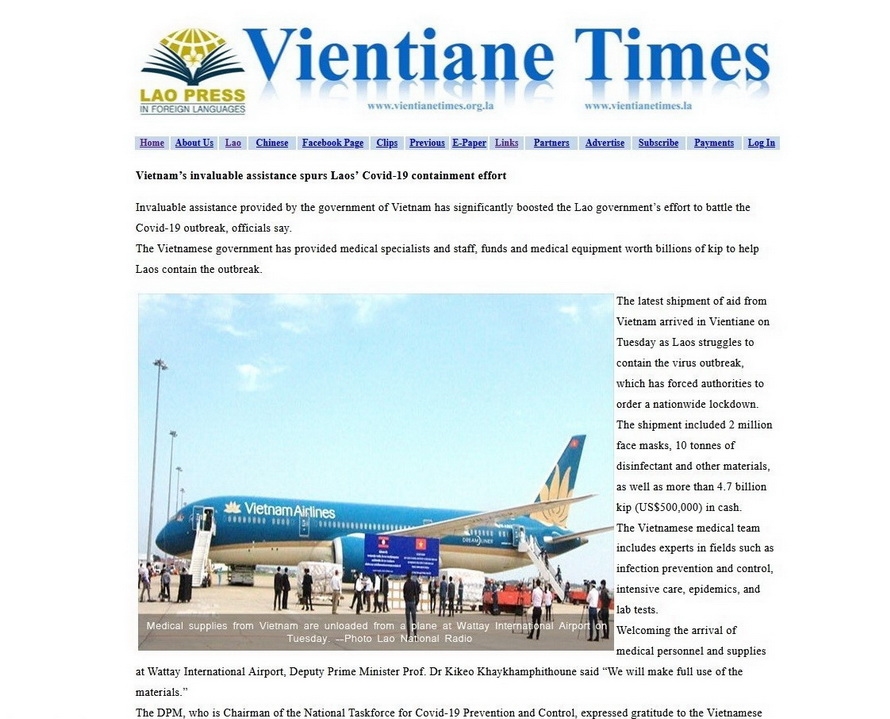 The "Vientiane Times" on May 6, 2021, quoted Lao PDR officials saying about the invaluable assistance provided by the Vietnamese Government to help Laos contain the COVID-19 outbreak. Photo: Pham Kien/VNA 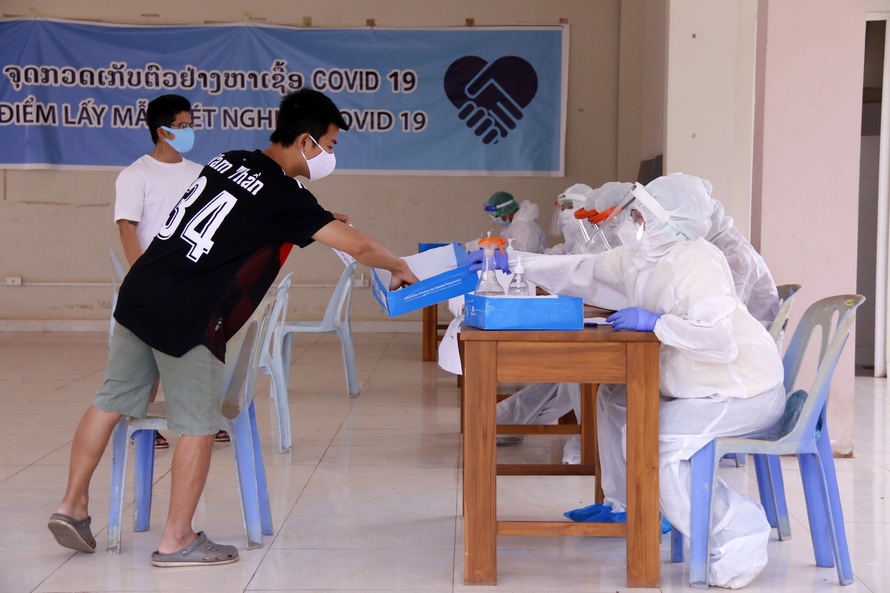 Vietnamese students in Laos have their samples taken for COVID-19 testing. Photo: Pham Kien/VNA |
Meanwhile, the Cambodian Health Ministry reported that the number of new cases decreased on the third consecutive day, reaching 480 on May 11, raising the total to 20,223. Of which, 8,170 have been given all-clear from the virus.
Earlier on May 10, Australia signed an agreement with the United Nations Development Programme (UNDP) to provide an additional aid of 3.15 million USD to help Cambodia mitigate the impacts of the pandemic.
Also on May 11, Cambodia received the third batch of Sinovac vaccine with 500,000 doses from China.
The nation has so far received more than 4 million doses of vaccines, including 1.7 million doses of Sinopharm aided by the Chinese Government, 2 million Sinovac doses bought from China and 324,000 AstraZenica through COVAX Facility.
To date, more than 1.8 million Cambodians have been vaccinated against COVID-19.
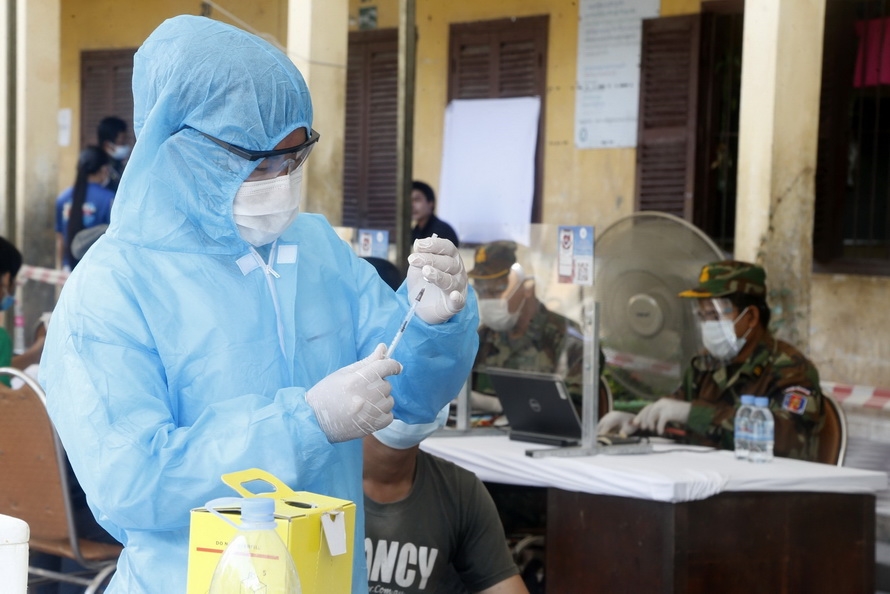 Vaccinating against COVID-19 for people in PhnomPenh, Cambodia. Photo: Xinhua/VNA |
In the immediate future, the Thai government had set a target of buying 100 million doses to inoculate 50 million out of about 70 million Thais and thus create herd immunity.
Thai Prime Minister Prayut Chan-o-cha announced that his country will purchase up to 200 million doses of COVID-19 vaccine in preparation of unforeseeable emergencies as the pandemic continues to rage on in some countries.
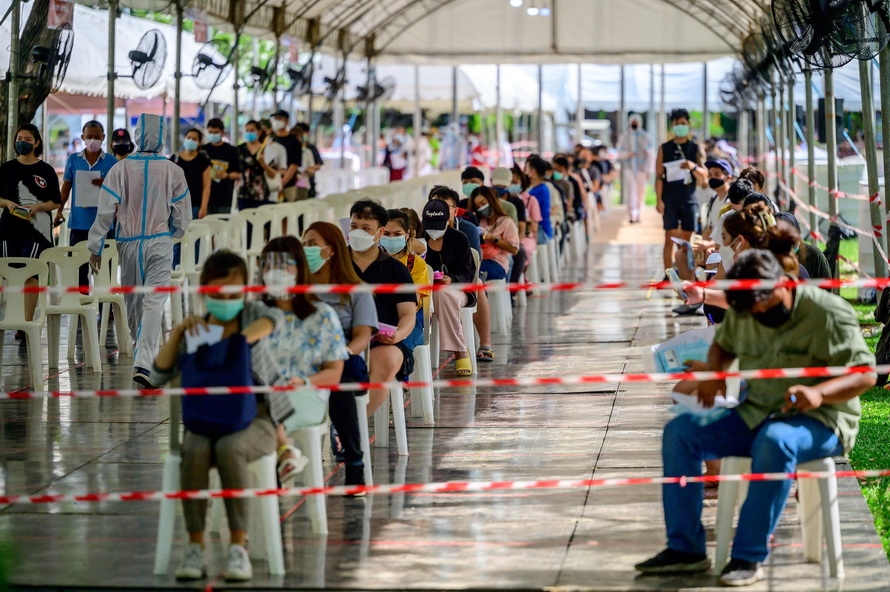 People queue up for COVID-19 testing in Bangkok, Thailand. Photo: AFP/VNA |
The COVID-19 pandemic continues to ravage many Southeast Asian countries, with the exception of Brunei which on May 6 marked one year free from COVID-19 transmission in the community.
Brunei reported the first case on March 9, 2020, and has so far recorded 228 infection cases, 219 of them having recovered and three died.
The country launched a vaccination drive on April 3 this year and as of May 5, 17,776 people out of Brunei’s population of 450,000 had been vaccinated.
Meanwhile, Indonesia on May 6 began imposing a travelling ban across the country in an effort to contain SARS-CoV-2 during Eid al-Fitr celebrations, when millions normally travel to mark the end of the Islamic fasting month.
The country has to date logged 1.69 million infections and more than 46,300 deaths related to the disease, a record in Southeast Asia.
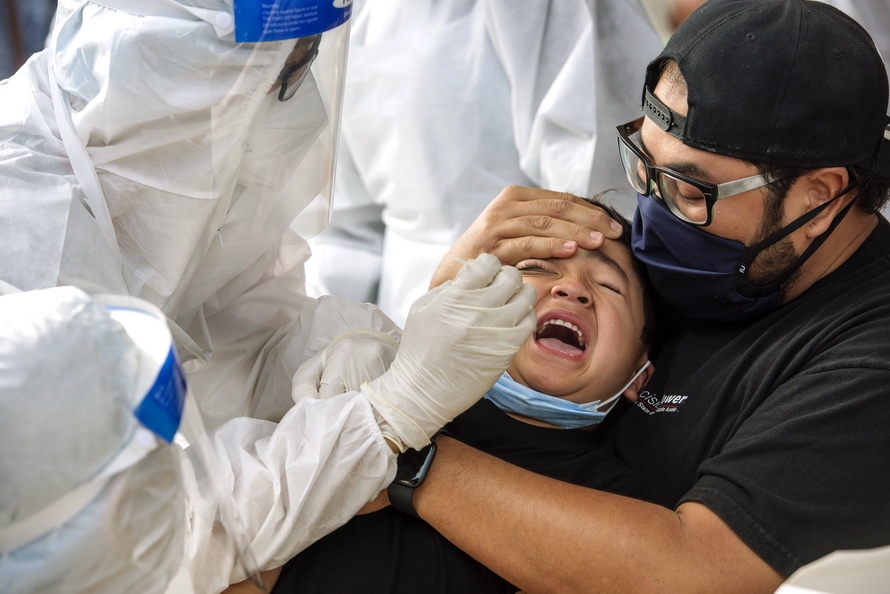 Taking sample for COVID-19 testing in Kajang, Malaysia. Photo: Xinhua/VNA |
Malaysia has tightened measures to stop the spread of COVID-19, including extending the ban on inter-state travel to June 6.
Senior Minister and Minister of Defence Ismail Sabri Yaakob also said social activities, education and economic activities that could attract public gatherings are not allowed in the period.
From May 10, all Ramadan and Aidilfitri bazaars in movement control (MCO) areas will be closed.
The number of new COVID-19 cases in Malaysia has surged over the past two days at more than 4,000 each day, reaching a three-month high of 4,519 on May 8.
Meanwhile, the Manpower Ministry of Singapore said on May 7 that it will also reschedule entry into Singapore for work pass holders who had earlier obtained approval to come to the country.
Work pass holders from higher-risk places who were approved to enter Singapore before July 5 will no longer be allowed to do so, with the exception of those from the construction, marine shipyard and process sectors and migrant domestic workers.
The agency said it was making these changes during a period of heightened alert, in view of a resurgence of COVID-19 cases in several countries and the emergence of new virus variants.
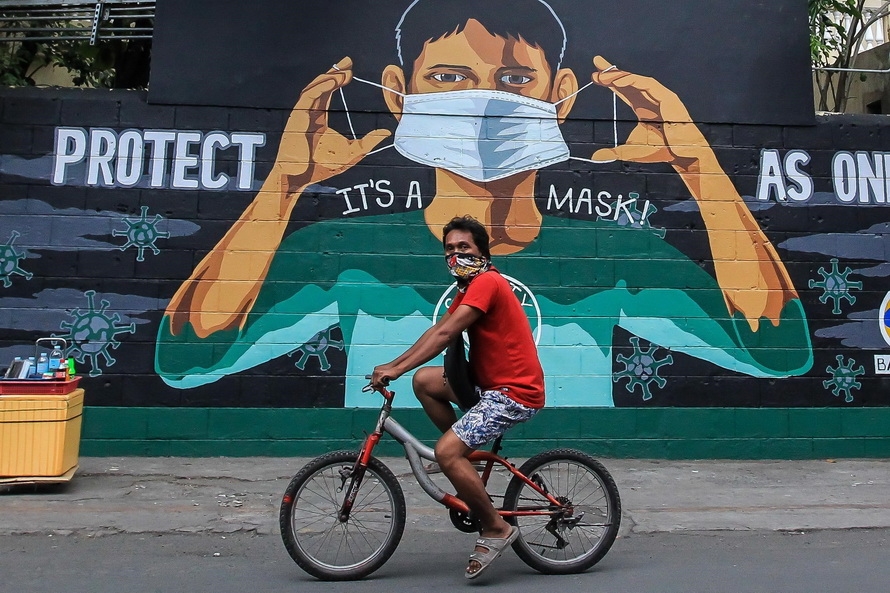 Wear-a-mask poster in Manila, the Phillipines. Photo: Xinhua/VNA |
The Philippines with an about 110-million population, has faced to increasing number of COVID-19 infections of new variants. According to Deputy Minister of Health Maria Rosario Vergeire, the country has administered over 1.9 million doses of COVID-19 vaccine so far to frontline workers, the elderly, and people with underlying conditions.
By VNA/VNP



